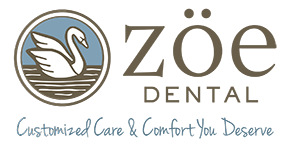Are You Brushing Your Teeth the Wrong Way?
Brushing your teeth may seem simple, but a variety of problems are tied to incorrect brushing technique. Check out these top mistakes and get tips to brush correctly.
It’s something we all learned as kids, and we do it twice (or more) a day. So when it comes time to brush teeth, surely we’re not making any toothbrush mistakes … or are we? Actually, dental health experts say that improper brushing technique is more common than most people realize. And the result is that healthy teeth are not as common as they should be.One of the first things you can do, says John Dodes, D.D.S., a dentist in Forest Hills, N.Y., and author of Healthy Teeth: A User’s Guide, is recognize that brushing isn’t the only requirement for having healthy teeth. “A common misconception with oral care habits is that brushing is enough, when in fact brushing alone misses more than half the germs in your mouth,” he says. “People also forget that it’s important to clean between the teeth, as well as your tongue, cheeks, and the floor of your mouth. Your mouth has more germs than [there are] people on earth, so it’s important to make sure you brush, floss, and rinse to ensure you’re cleaning every surface.”Here are more top toothbrush mistakes people make:
- Using the wrong style of brush. “Some people still like medium or hard toothbrushes, but soft, round-ended bristles are the way to go,” says Matthew Hyde, D.D.S., a dentist in private practice in Plainview, N.Y. “When the plaque is soft, it will come off with a soft brush. Once it hardens into tartar or calculus, it won’t come off with brushing no matter how hard the brush, but you can damage the delicate gum tissue by using those types of brushes.”
- Not replacing an old brush. You should replace your toothbrush every three to four months for dental health, but many people let it go way beyond this point. “When the bristles become splayed out, they cannot properly clean the various surfaces of your teeth,” says Shawn Frawley, D.D.S., a dentist in private practice in Beverly Hills, Calif. “In addition, many of the power brushes lose cleaning power as the brush head ages.”
- Brushing back and forth. Often, the brushing mistake has to do with brushing technique itself. “You should brush in a circular motion, angling the bristles of the brush at a 45-degree angle to the gumline and focus on a couple teeth at a time,” says Dr. Frawley. “This enables you to clean under the gums, where most plaque is present and causes the most harm. This also helps avoid over-brushing.”
- Moving all around. People don’t always follow a set order as they move around their mouth brushing. “When we brush in this fashion, we tend to miss various surfaces of the teeth because it is hard to know where we have and have not brushed,” Frawley says. “You should brush your teeth with a systematic approach. There are four quadrants of the mouth and three surfaces to brush per tooth. You should brush all the surfaces of one quadrant of the mouth at a time.”
- Brushing too aggressively. Not a lot of force is needed to do a good job brushing, says David S. Keen, D.D.S., a dentist in private practice in Beverly Hills, Calif. “Most people forget that bacteria and food particles that remain on the teeth after eating a meal are very soft in texture,” he says. “Therefore, gentle brushing is all that is needed to remove the bacteria and food.” If you use an electric toothbrush, keep in mind that it was designed to do it all. “Vigorous movement of the electric toothbrush against the teeth and gums and using heavy arm pressure can negatively affect the condition of your teeth and gums and can even cause gum recession,” explains Dr. Keen.
- Not brushing long enough. According to Keen, this is a big problem. “Most people, when asked how long they brush, typically say about one to two minutes, when in reality they typically brush for only 30 seconds,” he says. “It is important to access all the areas of the mouth and all surfaces of the teeth to effectively clean the tooth surfaces of bacteria and food, and to coat each tooth surface with the cleansing toothpaste.”
- Using too much toothpaste. The flip side of the previous tip is that most of us slather way more toothpaste onto our toothbrush than we actually need. “You just need a pea-sized amount for most toothpastes,” says Dr. Hyde. “The rest is wasted.”
- Not using an electric toothbrush. For the most thorough brushing job, most dentists agree that it’s time to make the switch if you haven’t already. “Power brushes are very affordable these days and are certainly worth the investment,” says Frawley. “There is no possible way to brush your teeth as effectively or thoroughly with a manual toothbrush as compared to a powered brush. Many of these brushes indicate if you are brushing too hard and have timers on them to ensure you are brushing for long enough. It makes brushing easier because you just need to hold the brush in the proper position and let the brush do the work.”
Author: Wyatt Myers
read more at: http://www.everydayhealth.com/dental-health/are-you-brushing-your-teeth-the-wrong-way.aspx
